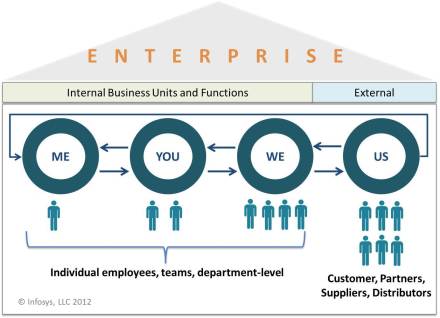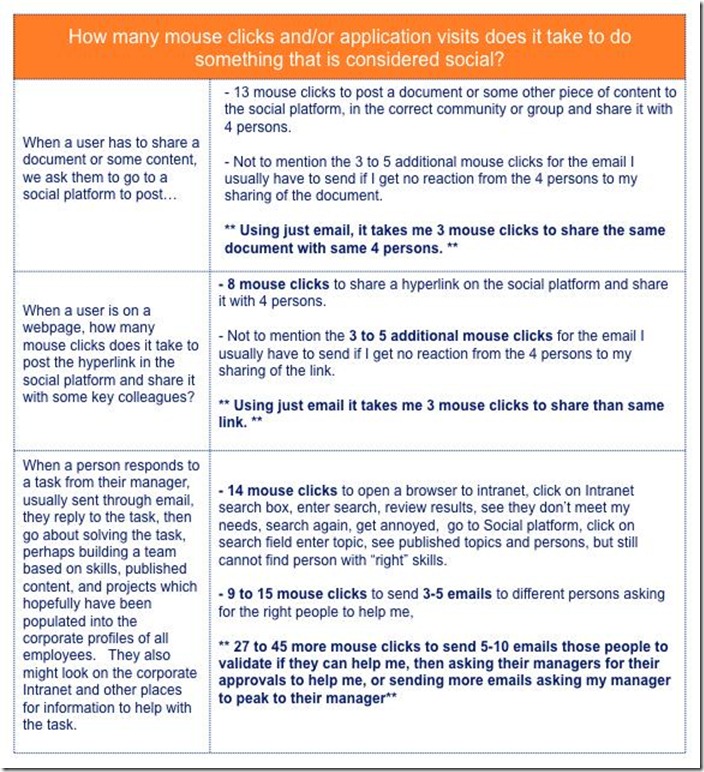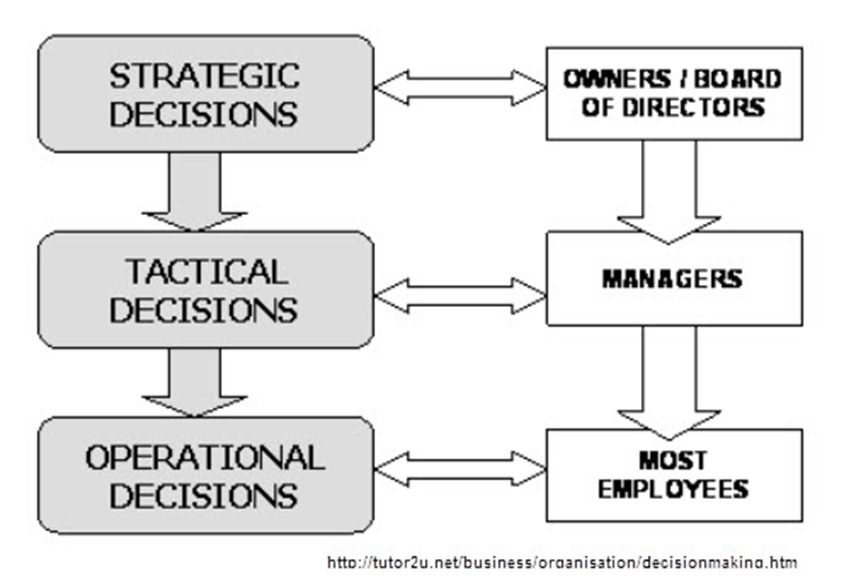Putting aside the platitudes of expectations heaped among the companies that embrace and strive to become more “Social”, there are some realities bound to the actual Social Business Platform (SBP) that you need to know in terms of managing expectations both upstream and downstream within the organization.
You probably heard of the “Do’s & Dont’s” regarding Social Business Platforms and Transformations. Those “Do’s & Dont’s” are focused on the “how” a SBP is designed and deployed, but I want to get more specific and talk about what a SBP CAN’T do for your organization, your people, your business on its own merits, and how you can effectively manage thru them.
I will break these down along 2 major pillars:
1. Organizational & Cultural
2. Technology-Related
Organizational & Cultural Changes:
A Social Business Platform (SBP) CAN’T:
- Force people to Collaborate, Listen, and Trust
- Force the changing of entrenched Corporate Stereotypes
- Force breakdown of negative Information Silos
- Retain existing Employees and attract new Talent
- Change the way Strategic Planning is done
- Guarantee Executional Readiness for Business Transformations
- Build engaging Online Communities of Practice and Experts
- Make Business Decisions for you
- Make you a better employee, manager, or leader
- Improve Customer Service
- Improve Organizational Politics
- Change Company Culture for the better
Technology-Related
A Social Business Platform (SBP) CAN’T:
- Fix the lack of a structured organizational Knowledge Capturing processes
- Consolidate your company’s multiple and separate Employee Directories
- Provide Single-Sign-On (SSO) capabilities to users
- Fix your company’s lack of Content Management/Retention Policies
- Replace your company’s Email (both as a platform and collaboration channel)
- Replace the best practice of implementing a Mobile Device Mgmt. platform for BYOD initiatives
- Replace EVERY Document Repository already in your company
- Replace your current Intranet right “out of the box”
- Reduce Network Bandwidth issues between remote sites, Corporate HQ, and your company’s datacenter
So in looking at these 2 lists, it is important to remember a SBP by itself is somewhat limited to what it can achieve. If you do not resolve some of these expectations around Social Business benefits and existing Technology challenges currently within your enterprise, you will find your transformation exceptionally difficult to undertake.
Remember, the “outputs”. a.k.a. The BENEFITS of the Social Business Transformation depend on the “Inputs”.
I have seen and heard so many claims to what a SBP can do for the company, then sitting thru many Enterprise architecture meetings and requirement gathering efforts, to where Business and IT come to find the actual platform by itself only offers OPPORTUNITIES to improve the company experiences, rationalize specific technologies, and provide positive Business Outcomes.
Organizations must be primed in multiple dimensions before undertaking a Social Business Transformation. Choosing the Social Business Platform is an important element of that transformation, but without the Change Management Program, the SBP will not solve the existing issues prevalent in the enterprise.
A Proper Change Management Program CAN:
- Align the Social Business Transformation to overarching company strategy.
- Ongoing Communication & Commitment by Leadership to support the Social Business Transformation.
- Creation of the necessary Organizational Structures with detailed Roles and Responsibilities in order to support the Social Business Transformation.
- Create a Communication Strategy to craft a robust and specific message to the segments of the company so each employee understands the “WIIFM” scenarios
- Build appropriate Steering Committees comprised of business and operational stakeholders so decisions can be taken on how the Social Business Transformation affects current and future business processes.
- Ensure the Social Business Transformation has “Sustainable Saturation” to permeate multiple phases of the organization to achieve intended effect.
- Measure the change and adapt where necessary to maintain alignment with company’s strategy and evolving business demands.
Only with a carefully designed, planned, supported, and executed Change Management Program will a company be able to capitalize on the value a Social Business Transformation can provide and positively impact Business Outcomes.













